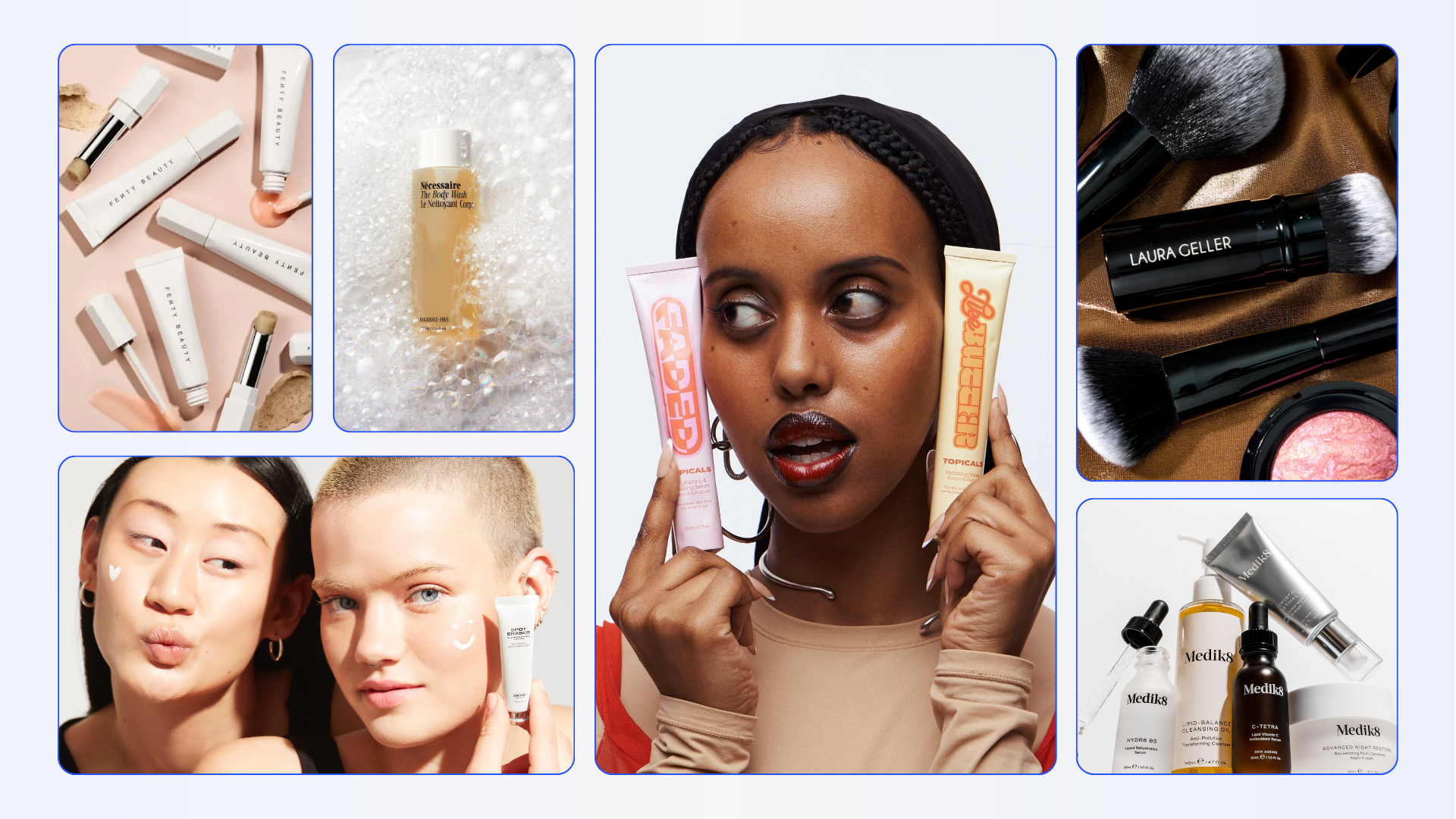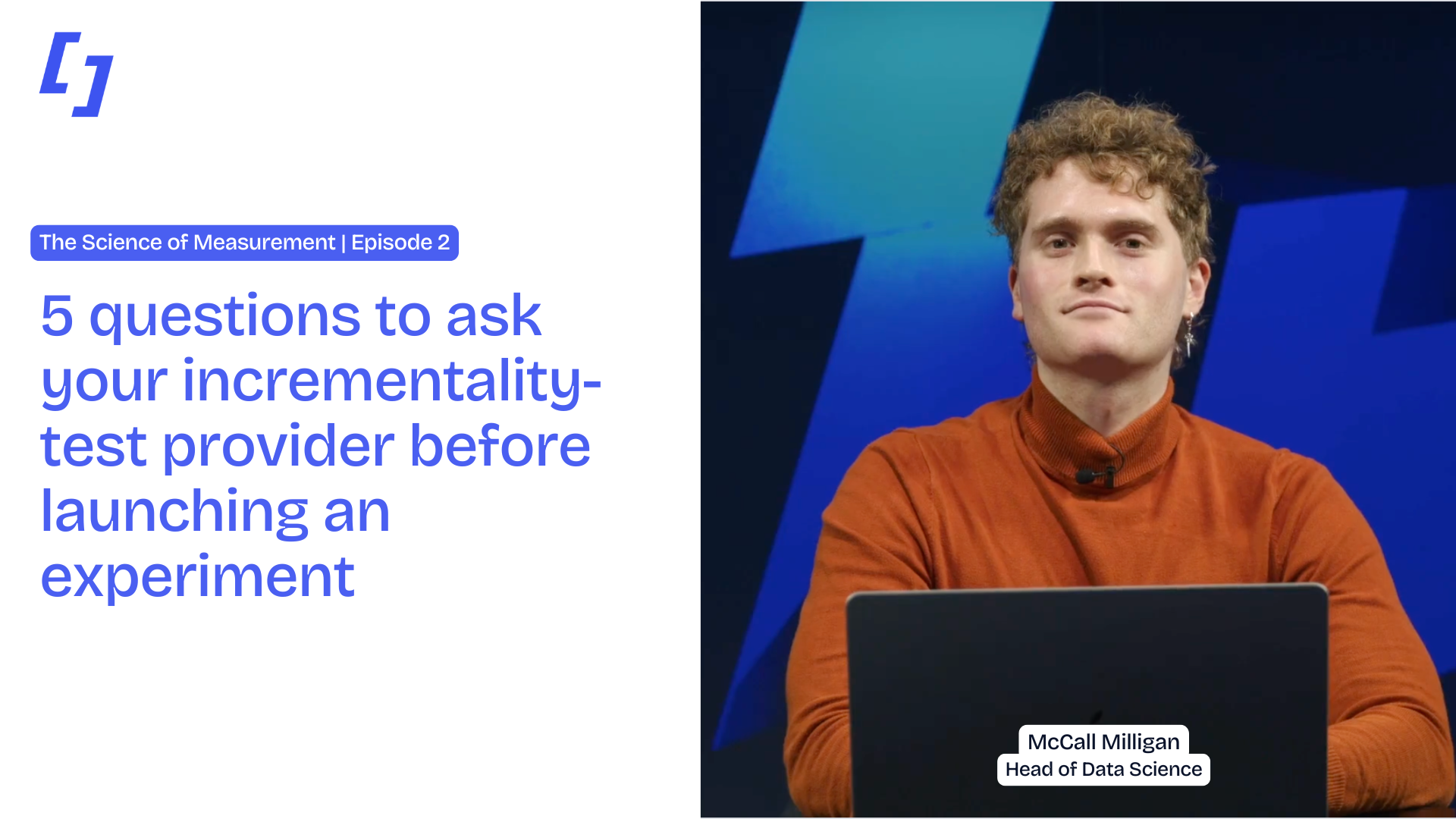The State of Beauty: What We’ve Learned From Working With Beauty Brands
Discover what we’ve learned from partnering with top beauty brands, and uncover the real performance patterns, challenges and opportunities defining the modern beauty landscape.

Beauty has become one of the most dynamic and influential sectors in marketing today. Scroll through social media and it’s everywhere – from creators blending foundations on TikTok to luxury brands turning campaigns into cinematic experiences. Influencers now act as storefronts for discovery and purchase, and creative storytelling has become as central to growth as product innovation.
But with this explosion of creativity has come a wave of complexity. Beauty brands now operate across more channels, creators and conversion points than ever before, each with its own blind spots. Measuring what truly drives growth has become increasingly challenging.
That’s why at Fospha, we’re digging deeper into the world of beauty. After partnering with many of the industry’s most forward-thinking brands, we’ve learned what makes beauty marketing unique and how smarter measurement can help brands turn that complexity into a competitive advantage.
The State of the Global Beauty Industry
Beauty isn’t slowing down. If anything, it’s speeding up.
According to McKinsey & Company’s 2025 report, The State of Beauty 2025: Solving a Shifting Growth Puzzle, the global beauty market is expected to grow around 5% annually through 2030, reaching approximately $590 billion in value.
That growth reflects not just rising demand, but the category’s evolution from niche artistry to cultural powerhouse. Beauty has become a form of self-expression – a creative playground where consumers and creators shape trends in real time.
Today, beauty brands don’t just advertise; they perform.
A campaign isn’t just a sales tactic – it’s a story, a mood, a moment in culture. Whether it’s the minimalist aesthetic of Nécessaire or the maximalist energy of TikTok’s “get ready with me” creators, beauty brands use creative to express identity as much as to drive conversion.
The challenge is that this new form of marketing doesn’t fit neatly into traditional measurement frameworks. As beauty brands scale across DTC, TikTok Shop, Amazon and retail, the path from impression to purchase has become more complex than ever.
What Makes Beauty Brands Different
Beauty marketing might look effortless on the surface, but behind the gloss lies one of the most complex measurement challenges in consumer marketing.
1. Omnichannel by Nature
Beauty brands sell across almost every commerce surface – their own sites, Amazon, TikTok Shop, Sephora and in-store retailers. Each ad can influence sales in multiple places, and without unified measurement, many of those connections remain invisible.
2. Creative-Driven Demand
In beauty, creative is targeting. With AI-led campaign types like Meta Advantage+ and TikTok Smart Performance, creative dictates who sees your ad, how it performs and how quickly it scales. Understanding which concepts actually move the needle has become a central challenge for growth.
3. Speed of Culture
Trends in beauty spread faster than in almost any other category. One viral “lip oil dupe” can sell out globally in days and be forgotten by the weekend. Marketers rarely have the luxury of waiting months for results – they need tools that respond as quickly as culture moves.
4. Paid and Organic, Hand-in-Hand
Influencers, creators and user-generated content blur the lines between brand and community. A creator post might drive thousands of organic searches days later, but last-click attribution gives it zero credit. Beauty brands must measure the influence chain, not just the click path.
5. Beauty is Personal
Beauty brands compete on emotion as much as efficacy. Consumers buy into a feeling – confidence, creativity, belonging – not just a product. That long-term brand equity is a powerful driver of growth and needs its own layer of measurement.
How Beauty Marketers Must Adapt
The smartest beauty marketers aren’t trying to simplify the chaos, they’re learning to work with it. They’ve realized you can’t solve a 2025 measurement problem with 2015 tools.
.png)
1. From Attribution to Causality
The question is shifting from what drove the click to what created the demand. Modern beauty marketers are moving from click-based attribution to causal measurement, identifying which channels and creatives are most likely to generate incremental revenue across all sales surfaces.
2. From Campaigns to Continuous Learning
Peak-season campaigns and quarterly reviews no longer provide enough agility. Always-on measurement enables marketers to see performance shifts in near real time. If TikTok starts to saturate or Meta spikes in efficiency, they can adapt within days rather than weeks.
3. From Clicks to Influence
A viral video might not convert directly, but it can double search volume or Amazon traffic a week later. Beauty brands are evolving toward models that capture this impression-led influence – the halo effect that drives organic and cross-channel sales.
How Fospha Helps Beauty Brands Measure What Matters
Beauty marketing’s creative power is also its analytical challenge – and that’s precisely what Fospha helps address. Our model unifies all of a brand’s media and commerce data into a single, causal view of performance.
1. Daily Marketing Mix Modeling (MMM)
Fospha’s daily updated MMM provides visibility into which channels – from Meta to TikTok to Amazon Ads – are most likely driving incremental revenue today. With our leading impression measurement capturing the true value of every channel across Paid Social, video, and display, Fospha shortens the time from question to insight from months to days, offering near real-time clarity for smarter budget allocation.
2. Cross-Channel and Marketplace Integration
Beauty brands often lose visibility once a shopper leaves their site. Fospha reconnects those dots through integrations with Amazon and TikTok Shop, showing how upper-funnel activity contributes to downstream sales.
Our Halo framework quantifies cross-channel influence – revealing, for instance, how TikTok or Meta ads can boost Amazon performance even without direct clicks.
3. Creative and Product Level Insights
Because creative now defines targeting, Fospha helps marketers see which concepts, formats and SKUs are delivering incremental lift. We surface saturation curves and marginal returns at creative and product level, helping teams scale what works and refresh what’s fading.
4. Unified ROI View and Strategic Validation
All insights roll up into a single measurement layer, creating a unified source of truth. Brands can plan, test and validate investment decisions with confidence – whether that means doubling down on creators or launching into a new channel.
Spotlight: What We’ve Learned From Beauty Brands
Working with beauty brands has been one of the most rewarding (and fun) parts of Fospha’s journey. These brands push boundaries, blend creativity with analytics, and constantly challenge us to measure the unmeasurable.
- Nécessaire used Fospha’s Halo to quantify how Meta and TikTok drove Amazon sales, discovering that their true ROAS was nearly double what DTC-only data showed. During Prime Day, they beat revenue benchmarks by 47%, with 65% of sales happening organically.
.png)
We’ll explore a number of our customer stories in upcoming blogs, detailing how beauty brands are closing measurement gaps, proving the value of brand-building activity and investing with greater confidence.
Conclusion
Beauty is fast, expressive and endlessly creative – and that’s exactly what makes it so challenging to measure. The same qualities that make beauty marketing engaging – emotion, community and culture – also make it analytically complex.
At Fospha, we’ve learned that the brands making the greatest gains are those connecting every part of the journey. From influencer impressions to Amazon conversions, they’re measuring what truly matters and using that insight to scale smarter.
If you’re a beauty marketer ready to see the full picture, our Peak Playbook is the perfect place to start. It’s your first step to understanding your complete performance - and turning all that beauty buzz into measurable growth.

Stay ahead with the inside scoop from Fospha.
For over 10 years we've been leading the change in marketing measurement.





